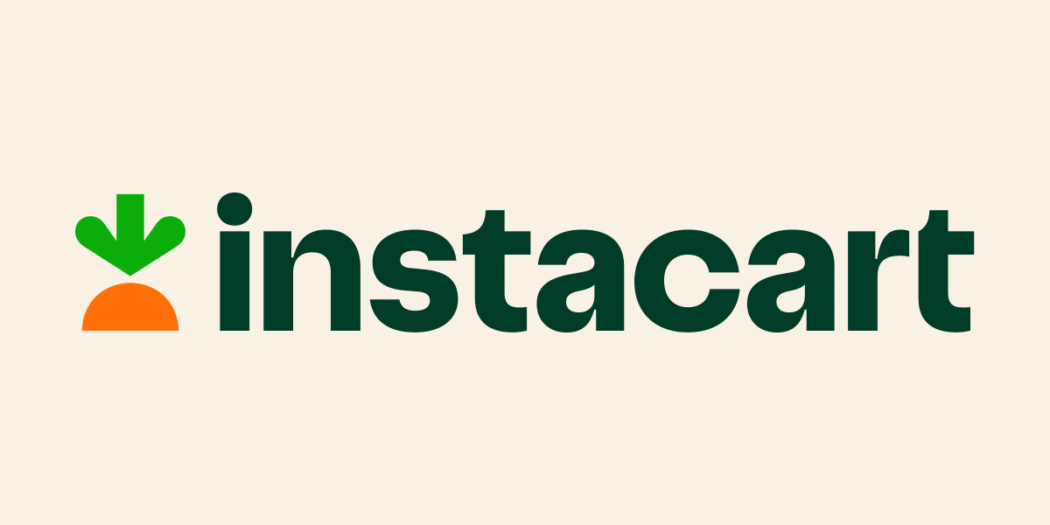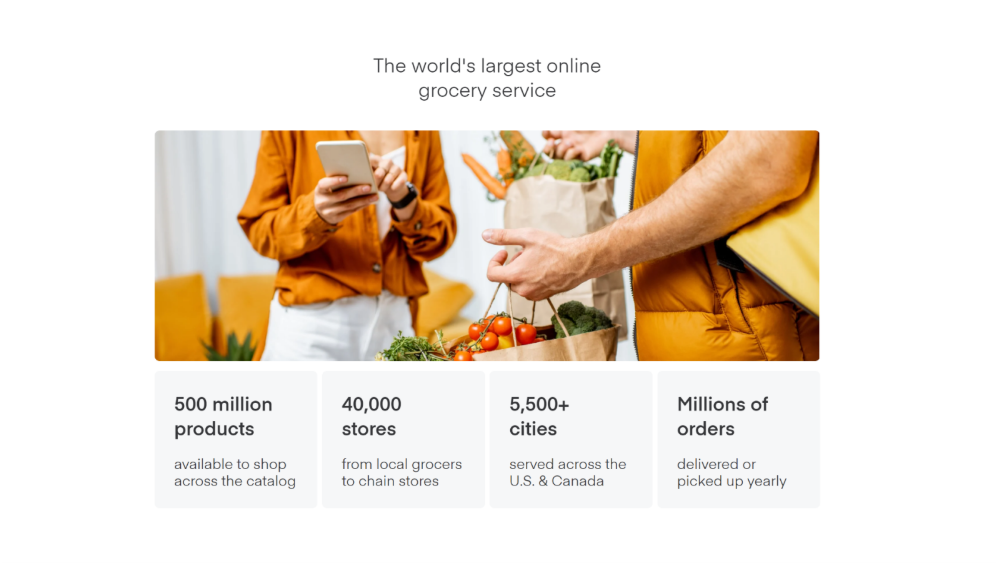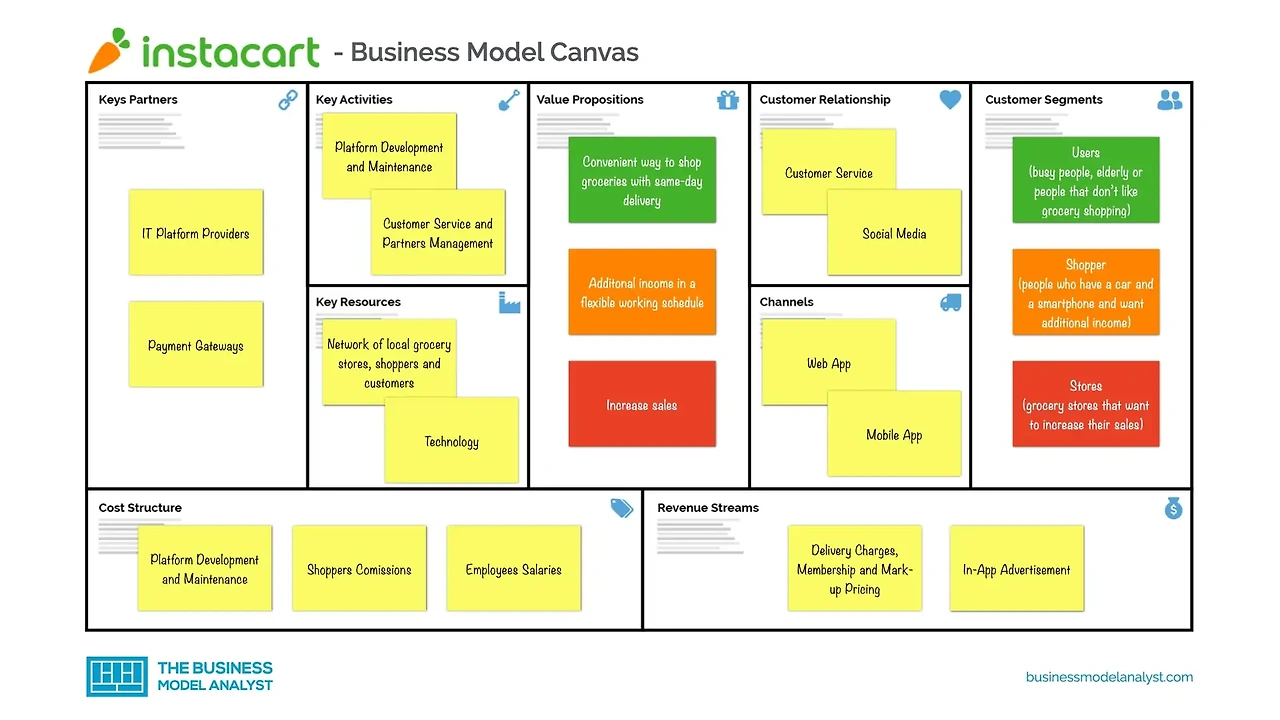▤ 목차
Overview
This report provides a comprehensive analysis of customer behavior and purchasing patterns within a specific e-commerce platform. The primary objective was to analyze customer data, identify high-value customers (VIPs), and develop strategies to increase revenue through targeted promotions and improved product offerings. Key findings include the identification of VIPs who significantly contribute to revenue, the exploration of their purchasing behaviors, and the proposal of strategic initiatives aimed at optimizing sales across various product categories. The report also explores potential improvements to the current analysis, emphasizing alternative approaches and methods that could uncover further insights.

About the company
Instacart is a prominent American company specializing in grocery delivery and pick-up services across the United States and Canada. Founded in 2012 by Apoorva Mehta, Max Mullen, and Brandon Leonardo, the company has its headquarters in San Francisco, California. Instacart has established partnerships with over 1,500 retail banners, encompassing more than 85,000 stores, thereby extending its reach to a vast customer base.
The company's platform enables customers to order groceries and other essential items through its website or mobile application. These orders are then fulfilled by personal shoppers, who pick, pack, and deliver the items to the customer's doorstep within a designated time frame, ranging from as little as one hour to up to five days in advance. This model offers convenience and flexibility to consumers, allowing them to shop from the comfort of their homes and receive deliveries at their preferred times.
Instacart's service is accessible in numerous cities across North America, providing a wide array of products from local grocers to national chains. The platform also offers features such as real-time updates, enabling customers to communicate with their personal shoppers during the shopping process, and a 100% quality guarantee on every order, ensuring customer satisfaction.
In addition to grocery delivery, Instacart has expanded its services to include alcohol delivery in regions where it is permitted. The company has also introduced curbside pickup options at select retail locations, providing further convenience for customers who prefer to collect their orders personally.
Instacart's business model is built on partnerships with a diverse range of retailers, allowing it to offer a comprehensive selection of products to its customers. By leveraging a network of personal shoppers and utilizing advanced technology, Instacart has positioned itself as a leader in the on-demand grocery delivery industry, continually adapting to meet the evolving needs of consumers.

Company Business Model

Instacart operates as an on-demand grocery delivery and pick-up service, effectively bridging the gap between consumers and a wide array of retailers. Its business model is multifaceted, incorporating elements from various successful platforms to create a comprehensive service ecosystem.
At its core, Instacart employs a three-tier customer strategy involving:
- Retail Partners: Instacart collaborates with numerous retailers, ranging from local grocers to national chains. These partnerships enable retailers to extend their reach by offering online shopping and delivery services without investing in their own delivery infrastructure.
- Shoppers: Instacart engages personal shoppers who are responsible for fulfilling customer orders. These shoppers select items from the chosen retailer and either deliver them to the customer's location or prepare them for pick-up.
- Consumers: End-users who place orders through Instacart's platform, seeking the convenience of having groceries and other essentials delivered to their doorstep or ready for pick-up.
This triadic relationship is reminiscent of models employed by companies like Uber and Airbnb, where the platform connects service providers with consumers, facilitating transactions that benefit all parties involved.
Instacart's revenue streams are diversified, ensuring financial stability and growth:
- Delivery Fees: Customers are charged fees for each delivery, which vary based on factors such as order size and delivery timing.
- Service Fees: Additional charges applied to orders, contributing to the operational costs of the platform.
- Subscription Model: Instacart offers a premium subscription service, Instacart+, which provides benefits like reduced fees and exclusive promotions for a monthly or annual fee.
- Revenue Sharing: Through partnerships with retailers, Instacart earns a commission on sales made via its platform.
- Advertising: Brands and retailers can pay for in-app advertising to promote their products, generating additional revenue for Instacart.
By integrating these revenue channels, Instacart has developed a robust and scalable business model that capitalizes on the growing demand for convenient, on-demand services in the digital age.
Since our datasets only contained anonymized customer data, we considered the delivery/service fees a revenue factor. The service/delivery fees start at $ \$3.99 $ and increase based on the number/cost of the items, distance, day of the week, time, etc. However, without having the actual service fees and logistics as part of the data, we set the fees at a constant $ \$3.99 $.
About the Service
Instacart offers a flexible and convenient grocery shopping service that allows customers to shop from a wide variety of local stores without leaving their homes. The service primarily operates through its online platform, accessible via a website and mobile application, where customers can browse, select, and purchase groceries from participating retailers. This online service caters to a broad range of needs, from daily essentials to specialty items, making it an attractive option for consumers seeking convenience and time savings.
Instacart connects users with personal shoppers who handle the picking, packing, and delivery (or pickup) of groceries. Customers are presented with a selection of stores in their area, including major chains, local grocery stores, and even specialized retailers. Once customers select their desired items, they can choose from different delivery or pickup options, based on their preferences for timing and location. This service enables customers to schedule deliveries for the same day or in advance, offering a high level of flexibility.
The core service model allows for a seamless shopping experience, with a focus on convenience and efficiency. Instacart partners with various retailers to offer an extensive catalog of products, ensuring that customers have access to the goods they need. Whether customers opt for delivery to their home or decide to pick up their order at the store, Instacart facilitates the entire process, ensuring that orders are filled accurately and delivered on time.
Using the Service
The process of using Instacart’s service model follows these steps:
- Customer Selection: Customers begin by choosing their preferred stores from a list of available options within their area and then shop for the items they want to purchase.
- Delivery or Pickup Options: After selecting their items, customers decide on a convenient time and date for either pickup or delivery.
- Pickup: If opting for pickup, customers can head to the store to retrieve their order at the selected time.
- Delivery: If opting for delivery, a personal shopper, located near the store, receives and accepts the order. The shopper then picks the items from the store and delivers them to the customer’s specified address.
- Payment: Once the order is finalized, customers pay the total price, which is calculated based on the number of items purchased, the delivery or pickup method selected, and any applicable service fees.
This streamlined service model offers customers the flexibility to shop from the comfort of their own home while enjoying fast, reliable delivery or pickup options tailored to their schedules.
Objective
Based on the collected data and researched information, our objective is to analyze key metrics, identify high-value customers (VIPs), and develop strategic recommendations aimed at optimizing operations and driving revenue growth.
References
- Finty. “How Does Instacart Work?” Finty. Accessed September 2022. https://finty.com/us/business-models/instacart/.
- Yo-kart. “How Does Instacart Work?” Yo-kart. Accessed September 2022. https://www.yo-kart.com/blog/how-does-instacart-work/.
- Business Insider. “Americans Are Still Having a Lot of Stuff Delivered from DoorDash and Uber, and It Shows How Much We'll Pay for Convenience.” Business Insider, August 2024. https://www.businessinsider.com/why-doordash-instacart-still-delivering-lots-as-consumers-pull-back-2024-8.
- Business Insider. “DoorDash Is Delivering for Lowe's, Ulta, and Other Retailers, and It's Making UPS and FedEx Nervous.” Business Insider, July 2024. https://www.businessinsider.com/doordash-instacart-challenging-ups-fedex-for-retail-deliveries-2024-7.
'AI > Project' 카테고리의 다른 글
| 2nd K-AI Manufacturing Competition (3) (2) | 2025.01.15 |
|---|---|
| 2nd K-AI Manufacturing Competition (2) (3) | 2025.01.15 |
| 2nd K-AI Manufacturing Competition (1) (2) | 2025.01.15 |
| 2nd K-AI Manufacturing Competition (0) (2) | 2025.01.15 |
| Marketing Strategy Proposal with Instacart Data Analysis (1) (1) | 2025.01.15 |





 }
}